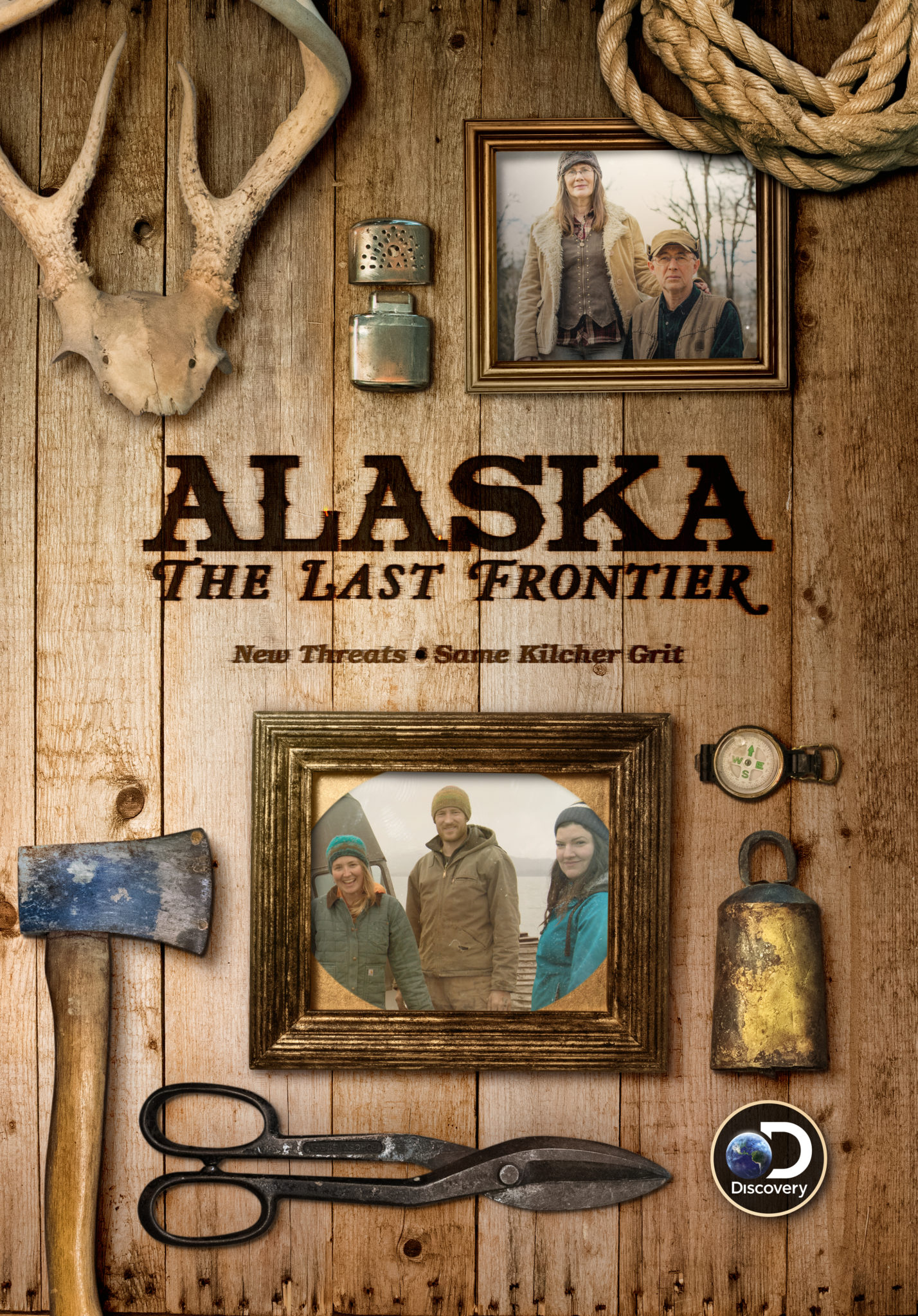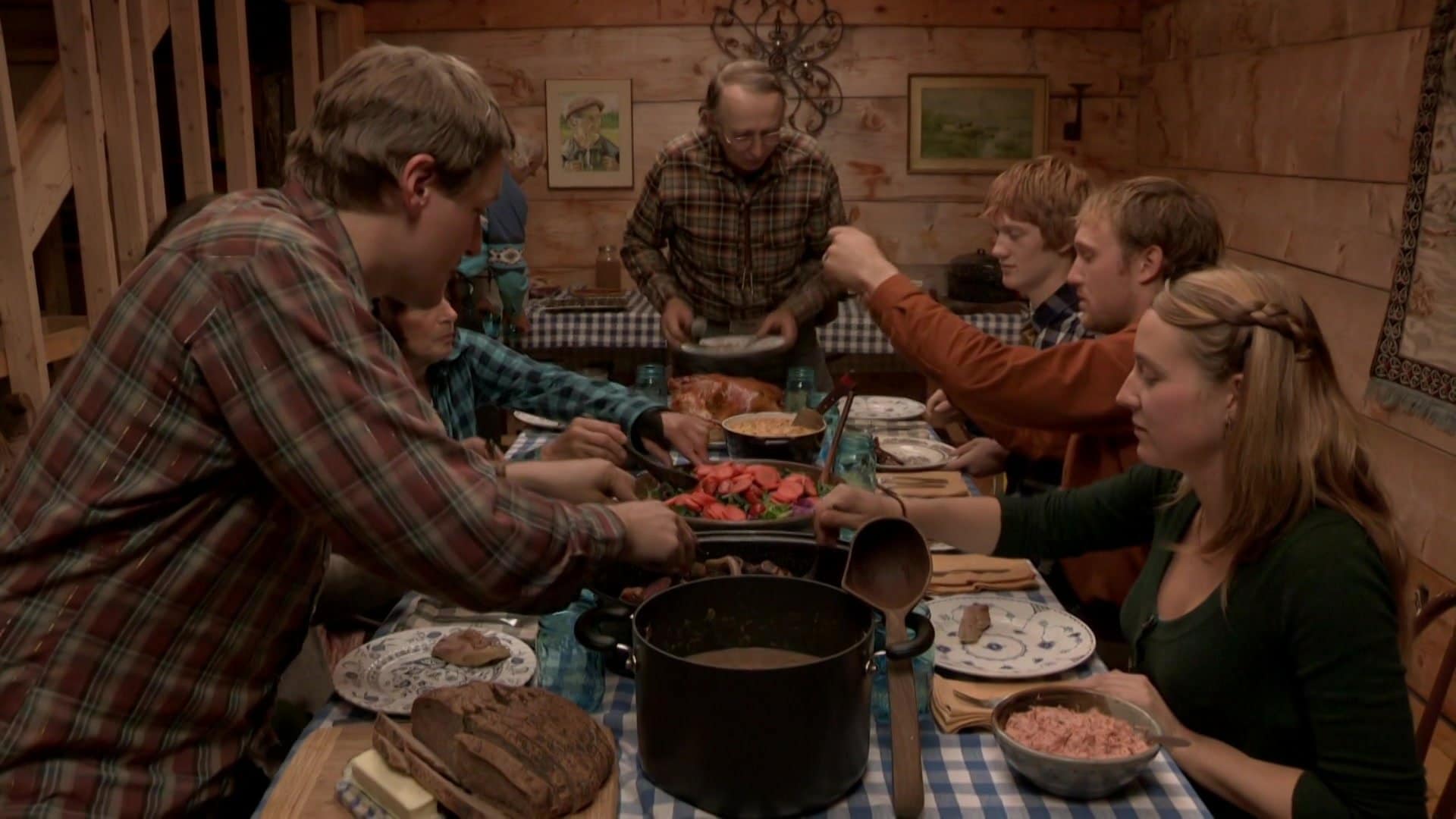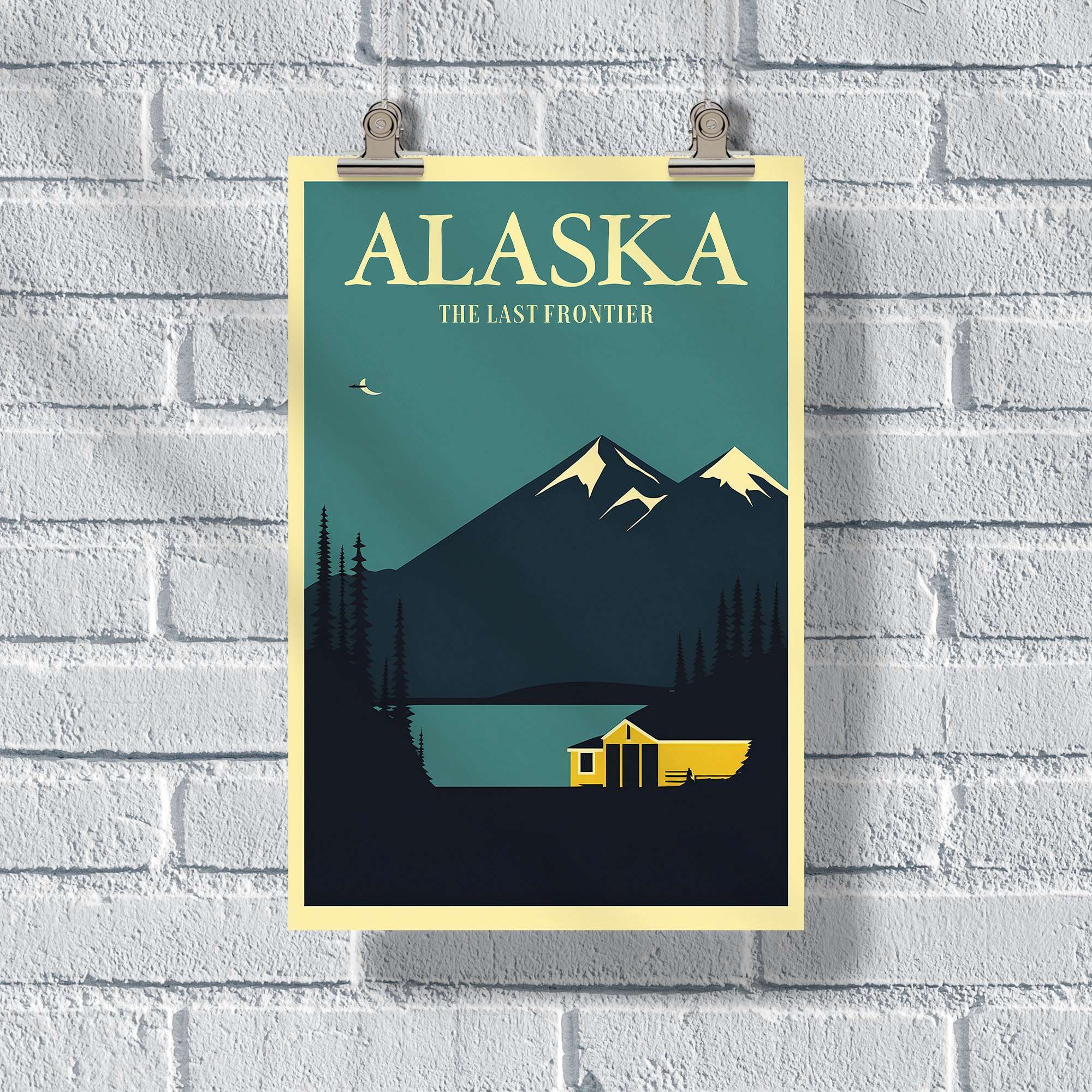Alaska, a truly vast and wild place, holds so many stories within its icy grip. It's a land that has always called out to those seeking something beyond the ordinary, a place where the edges of the known world seem to fade away. For many, it represents a kind of freedom, a chance to live life on terms set by the land itself.
For folks who wonder about the true spirit of this grand northern land, and maybe what has shaped its unique character, there's a lot to consider. It's a place where history isn't just in books; it's often etched into the very landscape and the lives of the people who call it home. Thinking about the past here helps us see how things came to be, you know, how this place got its special feel.
We're going to talk a bit about some of the big moments, the quiet shifts, and the lasting impressions that have made Alaska what it is, especially as people think about what happened on Alaska the Last Frontier. It’s a story with many layers, and honestly, each one adds something special to the picture.
- Whats Blippis Real Name
- Mens 400 Meter World Record
- Funny Good Morning Phrases
- Anthony Richardson Parents
- Famous People Dentures
Table of Contents
- The Call of the Wild - Early Days on Alaska the Last Frontier
- Big Changes and Turning Points - What Happened on Alaska the Last Frontier in Modern Times?
- Living Life on the Edge - What's It Like on Alaska the Last Frontier Today?
The Call of the Wild - Early Days on Alaska the Last Frontier
Long before anyone from outside came looking, this huge piece of land was home to many different groups of people. These first residents had figured out how to live with the land, how to gather what they needed from the rivers, the forests, and the sea. Their ways of life were connected deeply to the seasons and the animals around them, more or less shaping everything they did. They had their own ways of sharing stories, too, about how the world began and how to live well in such a powerful setting.
You see, for countless generations, these communities lived by rules of the wild, learning from every change in the weather, every shift in the animal paths. They passed down their knowledge from older folks to younger ones, making sure everyone knew how to stay safe and find food. This deep connection meant they understood the signs the land gave them, things that many new arrivals would later miss. It was, in a way, a very different kind of living than what most people knew elsewhere.
Then, a long time ago, people from other parts of the world started showing up. First, it was folks from Russia, looking for furs and new places to claim. They built small outposts, often near the coast, and tried to set up trading posts. This was a pretty big moment, actually, as it marked the start of new interactions, sometimes peaceful, sometimes not so much, between the original inhabitants and these newcomers. It truly changed how things were done.
- Sympathy Messages For Loss Of Father
- Blake Griffin Family
- Si Robertson Death
- What Happens To Fiona Shameless
- Richest Actors Bollywood
How Did People First Settle on Alaska the Last Frontier?
The first European people to really make a mark here were the Russians, as I was saying. They came by sea, mostly in the 1700s, drawn by the rich supply of sea otter pelts. These furs were highly prized back in Europe and Asia, so, too it's almost like a gold rush for fur. They set up little towns, like Kodiak and Sitka, which became important spots for their operations. These settlements were often small, but they served as bases for hunting and trading, and they brought new ways of doing things to the area.
Life for these early Russian settlers and the native people they met was, well, a mixed bag. Sometimes, they traded goods fairly, learning from each other. Other times, there were big problems, as the new arrivals sometimes tried to control things or take resources without asking. It was a time of many changes, and some of those changes were quite hard for the people who had always lived there. It’s pretty clear that these early interactions laid down some of the first lines of what happened on Alaska the Last Frontier.
Eventually, Russia decided that holding onto Alaska was just too much trouble. It was far away, hard to defend, and the fur trade wasn't as profitable as it once was. So, in 1867, they decided to sell it. The United States bought it for a very small amount of money, a deal that some people at the time called "Seward's Folly," thinking it was a waste. But as a matter of fact, it turned out to be one of the best land deals in history, changing the whole picture for this northern land.
Big Changes and Turning Points - What Happened on Alaska the Last Frontier in Modern Times?
After the United States took over, Alaska went through a quiet period for a while. It was still mostly wild, with only a few small towns and military outposts. People in the rest of the country didn't really pay much attention to it. But that was all about to change, because, you know, big events have a way of shaking things up. The next big thing that happened here really put Alaska on the map for a lot of people.
This period saw a slow but steady increase in people coming to Alaska, not just for furs anymore, but for other resources. The idea of the "Last Frontier" started to take hold in people's minds, meaning it was a place where you could still find adventure, a place untouched by the busy world. It was a time of discovery, both for those who came from outside and for the land itself, as its true riches slowly began to show themselves.
The story of what happened on Alaska the Last Frontier truly picked up speed with the discovery of something that always gets people moving: gold. This wasn't just a little bit of gold; it was enough to cause a huge stir and bring many new faces to this distant land. It changed everything for Alaska, drawing people from all over the world with dreams of striking it rich.
The Gold Rush and Beyond - A Rush of Activity
The late 1800s brought the famous Klondike Gold Rush, which, while mostly in Canada's Yukon, sent thousands of hopeful prospectors through Alaska. Towns like Skagway became busy hubs, full of people getting ready for the tough trip over the mountains. Then, actual gold was found in Alaska itself, in places like Nome and Fairbanks. This really started a wave of people coming to dig for their fortunes, and it was quite a sight, honestly.
These gold rushes brought a lot of people and new ways of life to Alaska. Towns popped up almost overnight, with stores, saloons, and everything else a growing community needed. It was a wild time, full of hope and also a lot of hard work and disappointment for many. The stories from this time are legendary, telling of tough journeys and the sheer grit of those who chased their dreams in the cold wilderness. It truly was a period of intense activity, changing the very feel of what happened on Alaska the Last Frontier.
After the gold fever settled down, other industries started to grow. Fishing became a really big deal, with salmon canneries opening up all along the coast. Mining for other valuable things, like copper, also became important. These industries brought more people and helped build up the infrastructure, like roads and railroads, that Alaska needed to grow. It was a shift from quick riches to more settled ways of making a living, you know, a different kind of progress.
Oil and Its Impact - A Different Kind of Gold
Fast forward to the middle of the 20th century, and Alaska saw another huge discovery, one that would change its path even more than gold: oil. The finding of vast oil fields, especially at Prudhoe Bay on the North Slope, was a really big deal. It meant Alaska had a new kind of wealth, one that promised to bring a lot of money and jobs to the state. This discovery set the stage for a whole new chapter in what happened on Alaska the Last Frontier.
To get this oil from the far north down to where it could be shipped, a massive pipeline was built. The Trans-Alaska Pipeline System was a huge undertaking, stretching hundreds of miles across mountains, rivers, and frozen ground. It was a truly incredible feat of engineering, taking years to build and employing thousands of people. This project alone reshaped parts of the Alaskan landscape and economy in ways no one could have fully imagined before.
The money from oil brought a lot of changes. It helped fund public services, build schools, and improve infrastructure across the state. But it also brought new questions about how to balance economic growth with protecting Alaska's amazing natural places. It's a question that people in Alaska still talk about a lot, trying to figure out the best way forward for their special home. This wealth, while bringing benefits, also brought its own set of challenges and discussions.
Living Life on the Edge - What's It Like on Alaska the Last Frontier Today?
Today, Alaska is still a place of wide-open spaces and incredible natural beauty, but it's also a modern state with cities and towns. Life here is often different from other places, because, you know, the environment plays such a big role. The weather can be extreme, distances are huge, and many communities are quite far from each other. It takes a certain kind of person to thrive here, someone who appreciates the quiet and the wildness.
People who live in Alaska have a strong sense of community, often relying on each other in ways that might seem old-fashioned elsewhere. They face unique challenges, like getting supplies to remote areas or dealing with long, dark winters. But they also get to experience things most people only dream of, like the Northern Lights or seeing wild animals up close. It’s a very particular way of living, and it shapes the people who choose to call it home.
The idea of "The Last Frontier" still holds true in many ways. There are still vast areas of wilderness, places where humans have barely set foot. For many, it's a reminder that there are still parts of the world that remain truly wild and untamed. It’s a place that keeps calling to people who want to experience something raw and real, something that feels a bit outside the usual everyday routine.
Daily Life and Challenges - The Ongoing Story
Daily life in Alaska can vary a lot depending on where you are. In cities like Anchorage or Fairbanks, you'll find most of the things you'd expect in any modern city, just maybe with more snow and moose sightings. But out in the smaller villages, especially those not connected by roads, life is often about self-reliance and living off the land. This includes hunting, fishing, and gathering, much like the first people did.
One of the big things people deal with here is the weather. Winters are long and cold, with very few hours of daylight in some places. Summers, on the other hand, can have almost endless daylight, which is pretty cool, but also a bit strange if you're not used to it. Getting around can be a challenge too, with planes and boats often being the main ways to travel between communities. These things definitely shape what happened on Alaska the Last Frontier for anyone living there.
Connecting with others, especially across those big distances, has always been a part of life here. Whether it was through traditional storytelling or, more recently, through things like satellite internet, people find ways to keep in touch. Sometimes, misunderstandings can happen when different ways of life meet, but there's often a real effort to work things out and build good relationships. It’s a constant process of figuring things out together.
What About the Future of Alaska the Last Frontier?
Looking ahead, Alaska faces some big questions. Things like climate change are having a real effect on the land, from melting glaciers to changing animal patterns. This means people are thinking hard about how to adapt and how to keep their way of life going. There's also the ongoing discussion about how to best use the state's resources while also protecting its incredible natural beauty.
The future of what happened on Alaska the Last Frontier will likely involve a mix of tradition and new ideas. People here are always finding new ways to live with the land, to make a living, and to keep their communities strong. It’s a place that continues to draw people who want to live differently, who appreciate the raw power of nature and the spirit of independence.
It’s a place that keeps changing, but also keeps holding onto its core identity. The stories from the past, the lessons learned, and the enduring spirit of the people who call it home will surely guide what comes next. It’s a truly unique place, and its story is still being written, every single day.
Related Resources:



Detail Author:
- Name : Claud Blick
- Username : damaris83
- Email : xwilderman@mclaughlin.com
- Birthdate : 1978-07-20
- Address : 37729 Pearlie Centers Suite 398 Kilbackland, NJ 96947
- Phone : (646) 875-3932
- Company : Glover-Rice
- Job : Postal Service Clerk
- Bio : Consequuntur totam cumque eos quibusdam inventore. Atque similique hic quas vel pariatur laborum. Vitae voluptate ut sit eum et. Molestias explicabo consequatur totam illum sequi repellendus.
Socials
linkedin:
- url : https://linkedin.com/in/oma.reinger
- username : oma.reinger
- bio : Est placeat fuga occaecati.
- followers : 4943
- following : 2580
twitter:
- url : https://twitter.com/oma.reinger
- username : oma.reinger
- bio : Sit laudantium quidem dolorum aut. Repellat eos vitae animi libero praesentium enim perspiciatis. Saepe et sint reiciendis voluptatum nostrum vel.
- followers : 5749
- following : 831